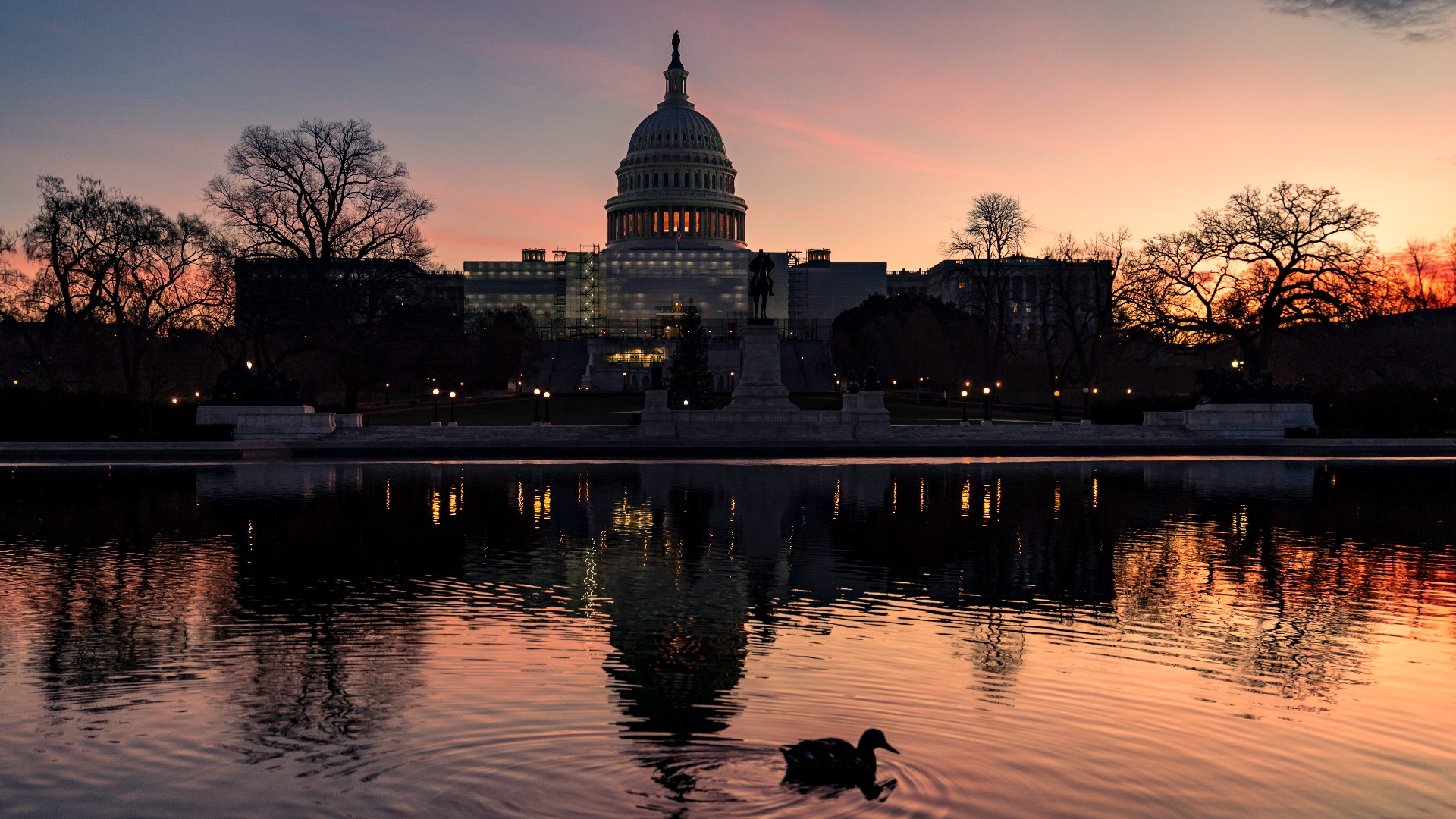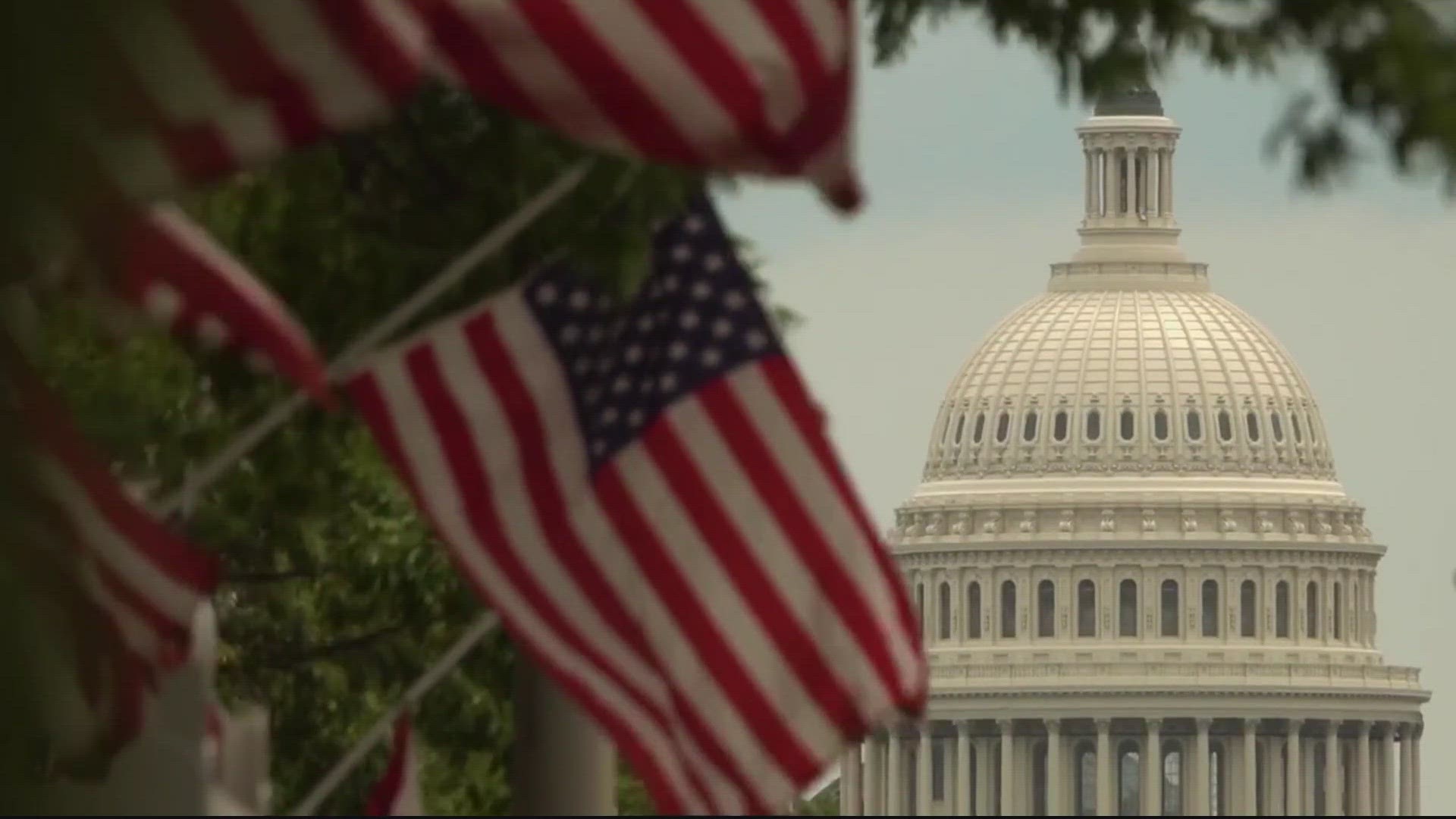What's different now from the 2018-2019 government shutdown?
During the 2018 government shutdown, only certain sectors of the federal government were affected. That's not the case today; here's why.

Congress has until the stroke of midnight on Saturday night to avert a shutdown of the federal government. That's the end of the fiscal year, and the government currently lacks approved funding to keep federal operations open beginning Oct. 1.
The longest government shutdown on record happened in 2018 when Donald Trump was president – 34 full days. That was what is called a "partial" shutdown. So what's different now? It's important to understand so you know what's at stake.
What is a 'partial' government shutdown?
A shutdown of the federal government is triggered when Congress fails to agree on funding bills for 12 different sectors of government operations before 11:59 p.m. on Sept. 30 – the new fiscal year begins at midnight Oct. 1. That means no funding for the new fiscal year has been approved, and nonessential operations in affected sectors must legally cease.
Each of the 12 funding bills, known as appropriations funding, are governed by parallel subcommittees in the Senate and House of Representatives. They are:
- Agriculture, Rural Development, Food and Drug Administration
- Commerce, Justice, Science, and Related Agencies
- Defense
- Energy and Water Development and Related Agencies
- Financial Services and General Government
- Homeland Security
- Interior, Environment, and Related Agencies
- Labor, Health and Human Services, Education
- Legislative Branch
- Military Construction, Veterans Affairs, and Related Agencies
- State, Foreign Operations, and Related Programs
- Transportation, Housing and Urban Development, and Related Agencies
The House and Senate can choose to pass the bills in a number of ways: individually, in groups, or as one large package referred to as an "omnibus" bill.
What happened in 2018 was a partial shutdown because several of the 12 bills passed before the deadline. Those were Defense, Energy-Water, Labor-HHS Education, Legislative Branch, and Military Construction-Veterans Affairs.
Congressional leaders in 2018 chose to have a political fight and stood their ground on the rest, meaning all the other appropriations funding was not approved, and those sectors had to close down until Congress came together on a decision.
What's different in 2023?
According to a 2019 report by the Congressional Budget Office (CBO) regarding 2018's partial shutdown, "CBO estimates that the federal civilian workforce totals about 2.1 million workers and that about 800,000 of them (or about 40 percent) are employed at agencies that lacked an appropriation during the partial shutdown ... Of those 800,000 employees, CBO estimates, about 300,000 (or 38 percent of employees at agencies without an appropriation) were furloughed during the shutdown."
The key difference between what happened in 2018 and what's happening now is that none of the funding has passed. So if no deal is reached by Saturday's end, all 12 sectors of the federal government will have to shutter, putting hundreds of thousands of American workers at risk.
When paychecks stopped going out, the people affected were not members of Congress. Most did not work on Capitol Hill. These were largely rank-and-file employees trying to support themselves and their families.
Workers who don't get furloughed are considered "essential." They must report for work even though they won't get a paycheck until the shutdown ends.
What else is affected by a shutdown?
Sadly, paychecks are just one aspect of a shutdown.
The Committee for a Responsible Federal Budget, a nonprofit public policy organization based in Washington, D.C., listed in detail the kinds of effects that can occur during a shutdown. While many programs are exempt, they say effects of a shutdown can be felt in the following ways:
- Social Security and Medicare: Checks are sent out, but benefit verification as well as card issuance would cease. While unlikely to happen again, during the 1995-1996 shutdown, more than 10,000 Medicare applicants were temporarily turned away every day of the shutdown.
- Environmental and Food Inspection: During the 2013 shutdown, the Environmental Protection Agency (EPA) halted site inspections for 1,200 different sites that included hazardous waste, drinking water, and chemical facilities, and the Food and Drug Administration (FDA) delayed almost 900 inspections. During the 2018-2019 shutdown, the FDA restored some food inspections a few weeks into the funding lapse for products that were considered high-risk.
- National Parks: In 2013, the National Park Service (NPS) turned away millions of visitors to more than 400 parks, national monuments, and other sites. NPS estimated that the shutdown led to more than $500 million in lost visitor spending nationwide. Many parks remained open during the 2018-2019 shutdown, though no visitor services were provided, and damage and trash build-up were reported at many sites.
- Air Travel: During the 2018-2019 shutdown, air travel was strained as a result of air traffic controllers and Transportation Security Administration (TSA) agents working without pay. Travelers faced longer lines as some TSA agents did not report to work and security checkpoints were closed, while the absence of ten air traffic controllers temporarily stopped travel at LaGuardia Airport and caused delays at several major airports.
- Health and Human Services: The National Institutes of Health (NIH) would be prevented from admitting new patients or processing grant applications. In 2013, states were forced to front the money for formula grant programs such as Temporary Assistance for Needy Families (TANF, sometimes described as “cash welfare”).
- Internal Revenue Service (IRS): As a result of funds provided in the Inflation Reduction Act, normal IRS operations would continue and all 83,000 employees would be exempt from furlough. In 2013, a backlog of 1.2 million income and Social Security number verification requests delayed mortgage and other loan approvals, and billions of dollars of tax refunds were also delayed. At least 26,000 furloughed IRS employees were recalled to work during the 2018-2019 shutdown in preparation for tax season, but 14,000 did not show up to work without pay.
- Supplemental Nutrition Assistance Program (SNAP): Though funding for the SNAP program is mandatory, the ability to send out “food stamp” benefits could be affected by a shutdown, since continuing resolutions have generally only authorized the Agriculture Department (USDA) to send out benefits for 30 days after a shutdown begins. During the 2018-2019 shutdown, the USDA paid February SNAP benefits early on January 20, just before the 30-day window ended, but it would have been unable to pay March benefits had the shutdown continued. In addition, during any shutdown, stores are not able to renew their Electronic Benefit Transfer (EBT) card licenses, so those whose licenses expire would not be able to accept SNAP benefits during a shutdown.
RELATED: Food pantries in the DMV prepare for looming government shutdown as concern for hunger grows
Does Congress get paid during a shutdown? After all, they're the cause of the shutdown, right?
Yes.
While hundreds of thousands of federal workers may have to scramble to support themselves or their families if the government shuts down, elected members of Congress will get their regularly scheduled paychecks.
Why is that fair?
Our elected representatives in Congress have very good protection from the effects of a shutdown while the people whom they represent do not. Congressional pay isn't a part of the 12 appropriations bills. In fact, their pay is mandatory as decreed by the United States Constitution.
As stated in Article I, Section 6, "The Senators and Representatives shall receive a Compensation for their Services, to be ascertained by Law, and paid out of the Treasury of the United States." Unqualified; the Constitution does not say under what circumstances or status of government that members of Congress be paid, just that they "shall" be.
Their pay is not tied to the funding of government operations. That means the people responsible for a government shutdown are constitutionally shielded from suffering from it.


